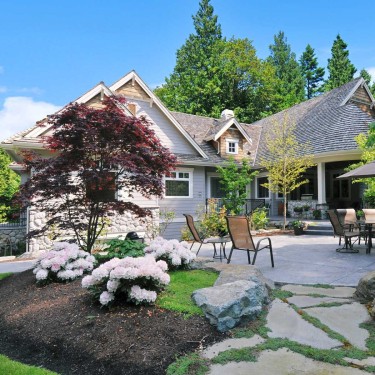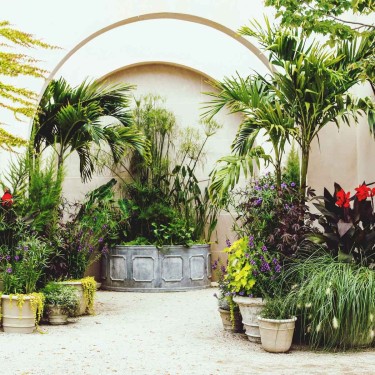There are hundreds of types of Japanese maples, one more colorful and graceful than the next. Here are 10 of our favorites to consider for your yard.
Every editorial product is independently selected, though we may be compensated or receive an affiliate commission if you buy something through our links. Ratings and prices are accurate and items are in stock as of time of publication.
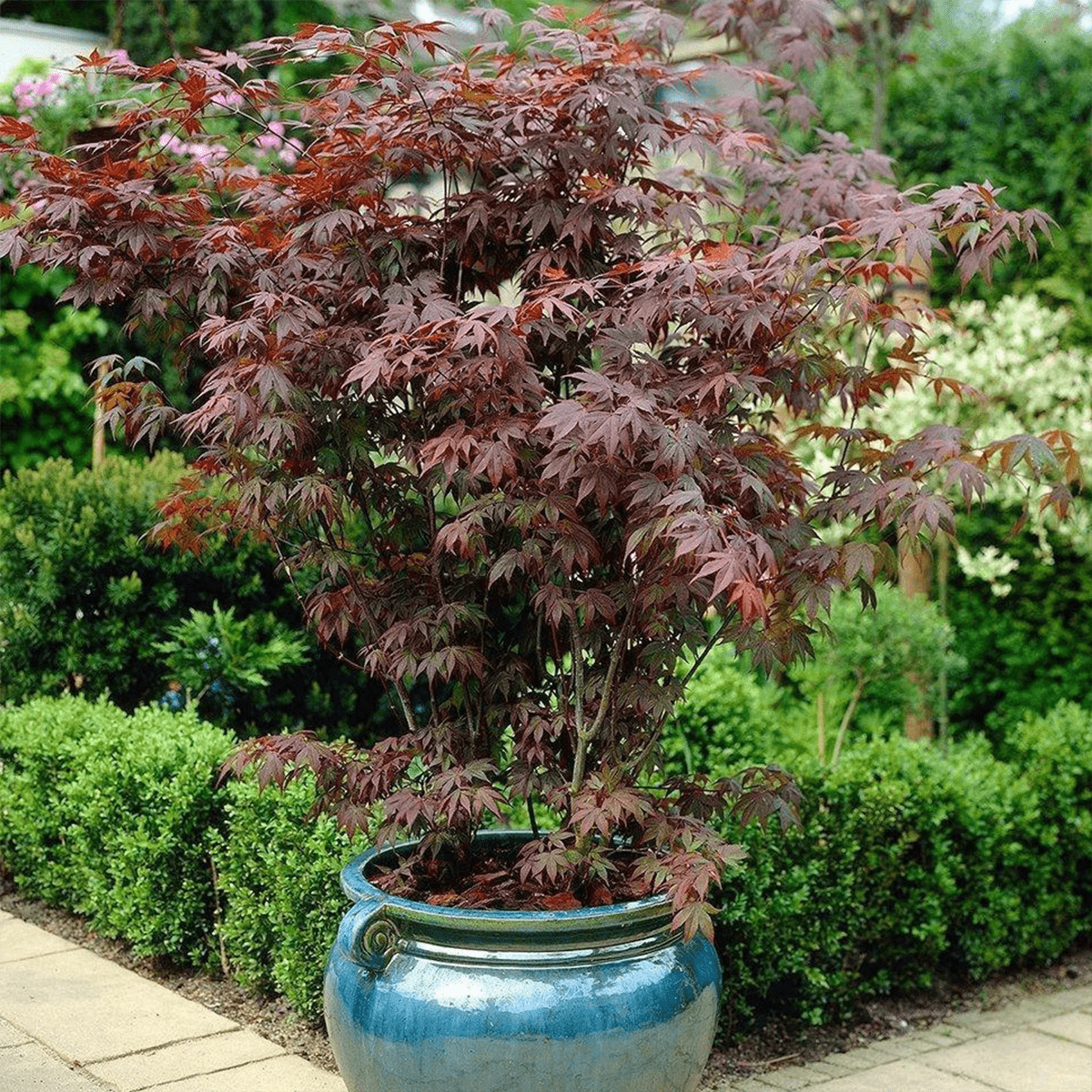
What Is a Japanese Maple?
In a recent visit to Illinois, my sister-in-law asked what I was working on. I said a story on Japanese maples. “Oh, I have seven of them in my yard,” she replied, and showed me each.
At first, I wondered why anyone would want seven of one kind of tree. But as the Japanese maple tour proceeded, I understood. These elegant, delicate and colorful trees are spectacular and so varied.
“A Japanese maple is a small ornamental tree, typically used as a specimen or showcase tree,” says Paul Knapp, owner of Landscape Architectural in Davenport, Iowa.
There are hundreds of varieties that entice you with varying sizes and forms. Weeping varieties have dropping branches, upright varieties have branches that grow out and up to 35 feet tall, while dwarf varieties grow two to eight feet tall. Japanese maples produce a small, colorful fruit each spring.
Some Japanese maple leaves are wide and fanning, while others are small, subtle and lacy. Leaf colors include purple, pink, red, orange, yellow, green and multi-colored.
In Japan, the cute hands of a baby may be called “hands like tiny maple leaves.” The shape inspired Swedish botanist Carl Thunberg’s scientific name for the tree, Acer palmatum, in 1820; he likened the leaf to the palm of a hand.
Thunberg introduced Japanese maples to Europe, and they rose in popularity in the late 20th century when the cultivars became available commercially.
Here’s what to consider when choosing a Japanese maple for your yard or garden:
- Space: “Japanese maple tend to do best in an area that isn’t out in the open,” says Knapp. “They often need a little protection from the wind. I like to install them near the corner of homes or garages as an accent piece. If you have larger surrounding trees in and around your space, it can be fine to plant them out in the yard a bit more, as these larger trees act as a shield.”
- Hardiness: Most Japanese maples do best in the moderate temperatures of USDA Plant Hardiness zones 5 through 8. “If you’re out of those zones, it’s possible that a Japanese maple can survive,” Knapp says. “But you may not see it thrive.” Japanese maples have some tree care requirements but few insect or disease problems.
- Size: With height ranging from two to 35 feet, Knapp says “be sure to check with your nursery or installer to make sure you put in the right tree for the space you have.”
- Color: The color range with Japanese maples is part of the appeal. “The leaf color will stand out among other trees in your space as the color stays fairly consistent throughout the year,” Knapp says. “You may see some slight change from spring to fall, but overall if you have a crimson red leaf in the spring, it’ll be that way in through the fall.”
- Texture: “Some leaves are broad, and some are thin and stringy,” says Knapp. “Depending on your preference, it’s best to research your tree before committing to it.”
- Cost: Varies depending on size of the tree and where you live, says Knapp, “but you’ll find these trees at a nursery selling from $300 to $1,600.”
“All of these Japanese maples are wonderful specimen trees, and they thrive in full sun/partial shade environments,” says Knapp.
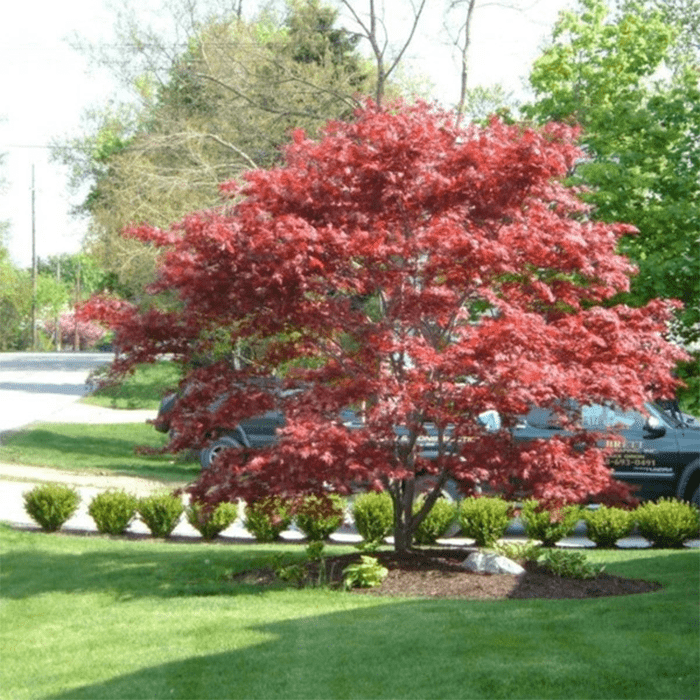
Bloodgood
“The Bloodgood Japanese maple is my absolute favorite variety,” says Knapp. “It reaches 15 to 20 feet tall and wide, and has a crimson red broad leaf. It’s the perfect ornamental accent tree alongside a house.”
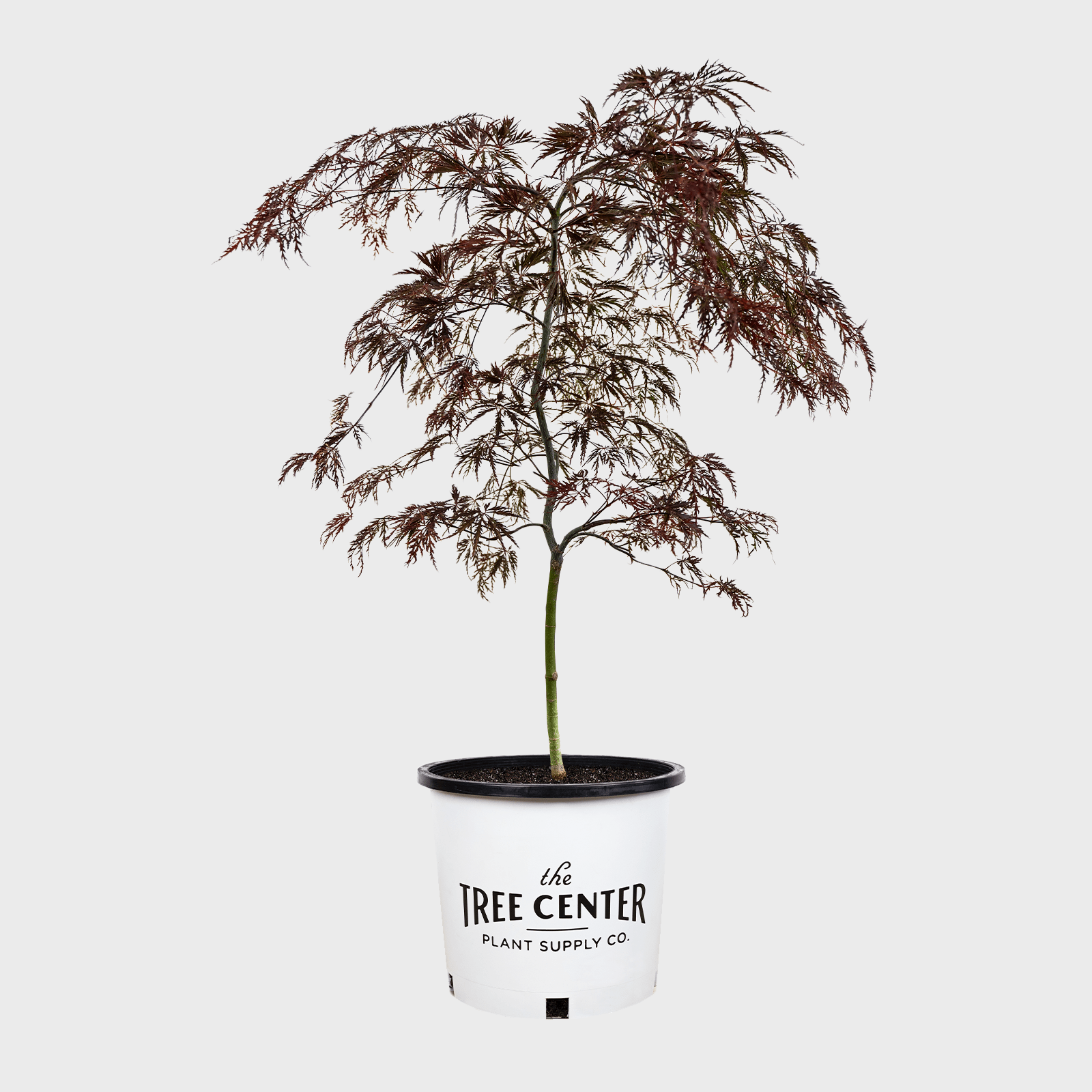
Crimson Queen
Crimson Queen grows to eight to 10 feet tall and 12 feet wide. “It has a soft, thin leaf that almost cascades over itself, creating beautiful textures mimicking a waterfall,” Knapp says.
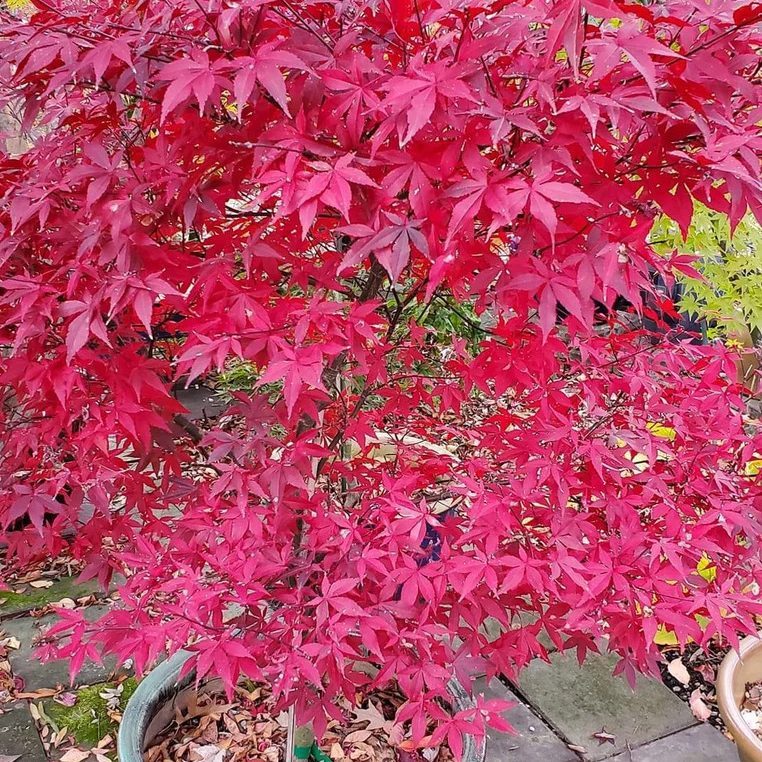
Englishtown
Englishtown grows to three to five feet tall and wide. Great for small spaces and gardens.
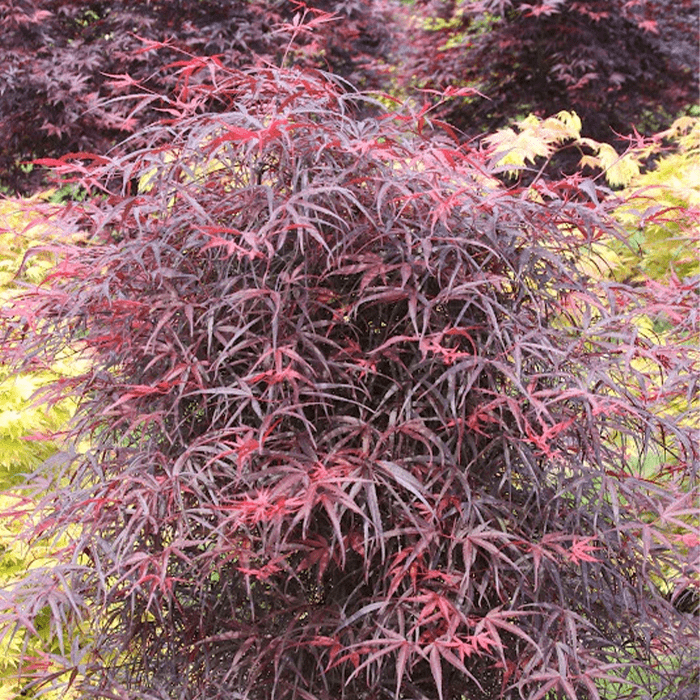
Hubbs Red Willow
“The Hubbs Red Willow leaf has very long and narrow lobes,” says Knapp, “and the tree height gets to about eight feet.”
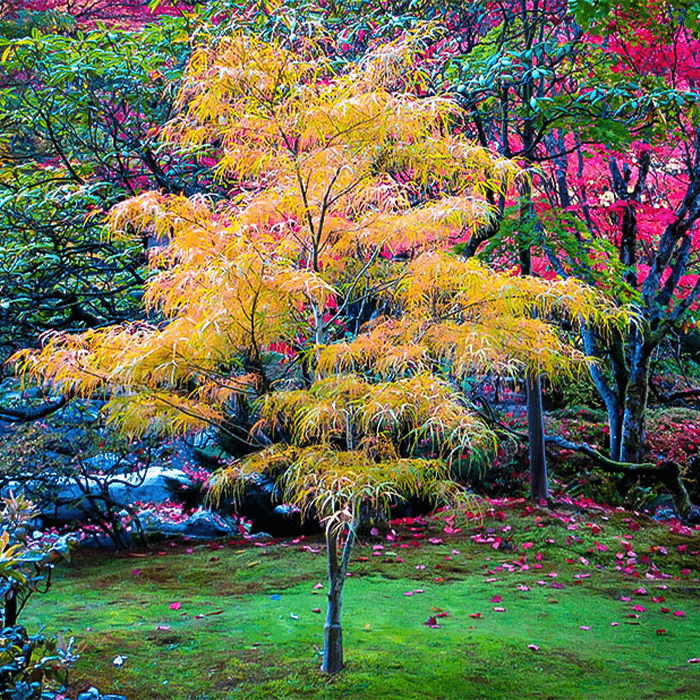
Koto No Ito
“Koto No Ito leaves change from green in the spring to orange and yellow in the fall before they drop,” says Knapp. “This could be a nice option if you are looking for a little variation from season to season.”
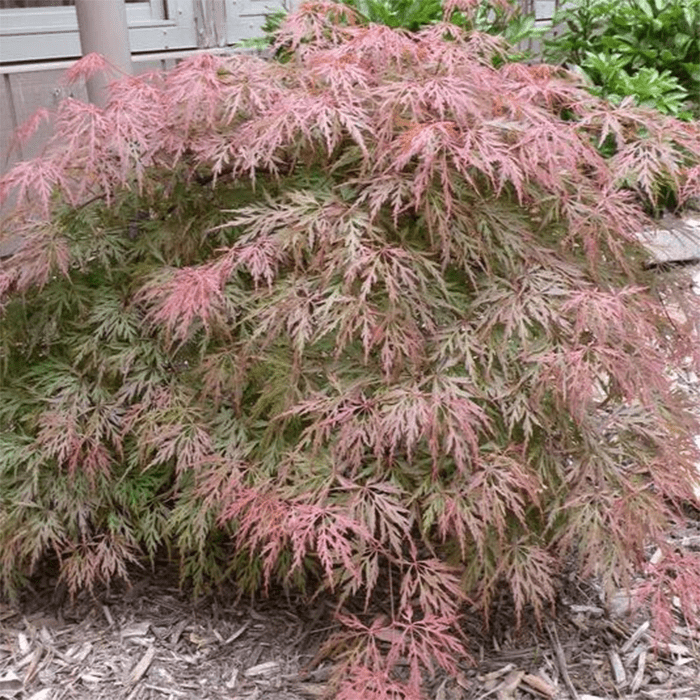
Orangeola
Orangeola Japanese maple leaves change from green to purple and then a brilliant shade of orange-red in the fall. A graceful, arching tree, it grows slightly taller than wide.
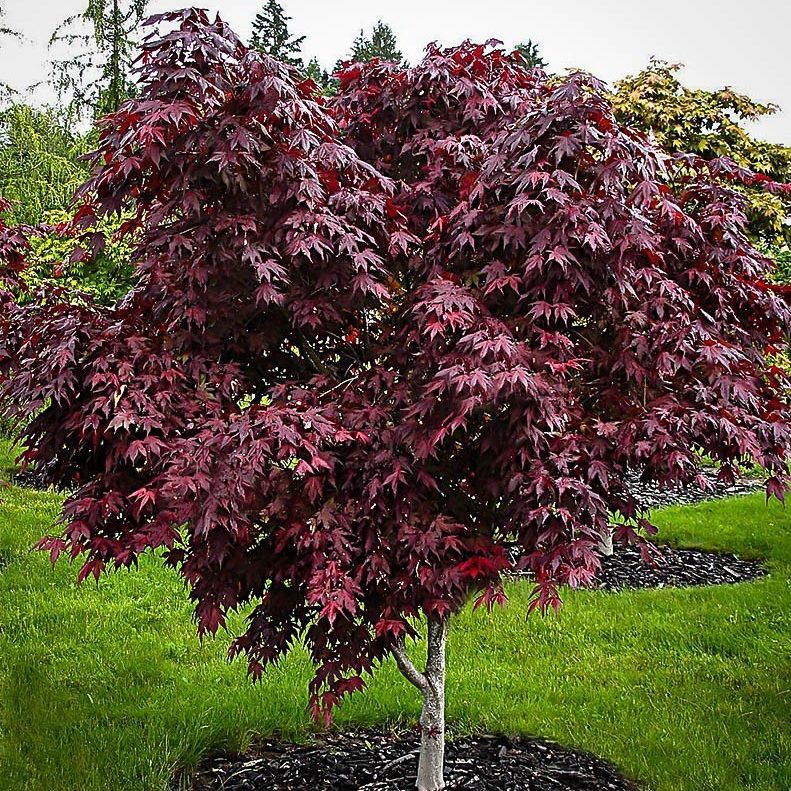
Purple Ghost
This is a densely-branched, upright tree with a spreading canopy of purple-red spring leaves with black veins. Purple Ghost leaves turn green with purple undertones and then red in fall. It develops its best color in full sun.
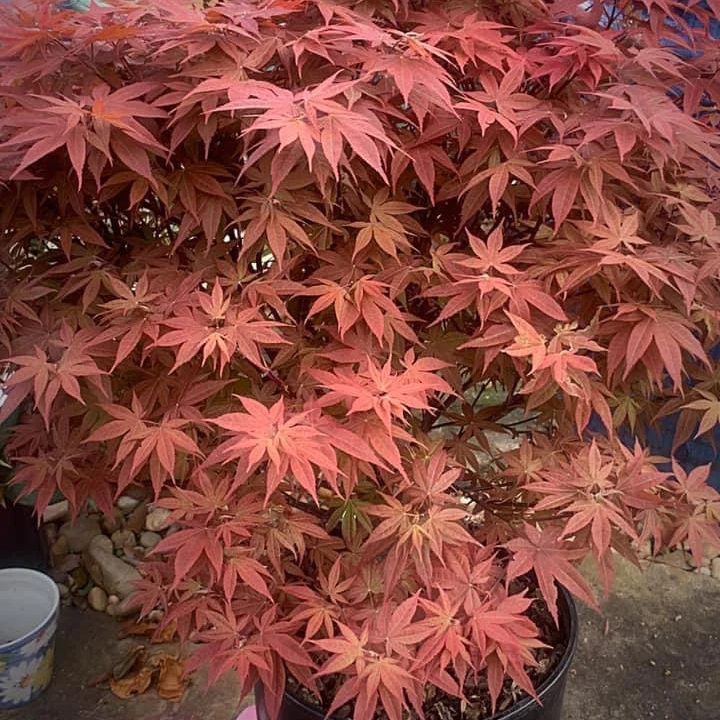
Rhode Island Red
Here’s a stunning dwarf Japanese maple with compact branching and leaves that are red in spring and orange in fall. Rhode Island Red works well as a container specimen tree.
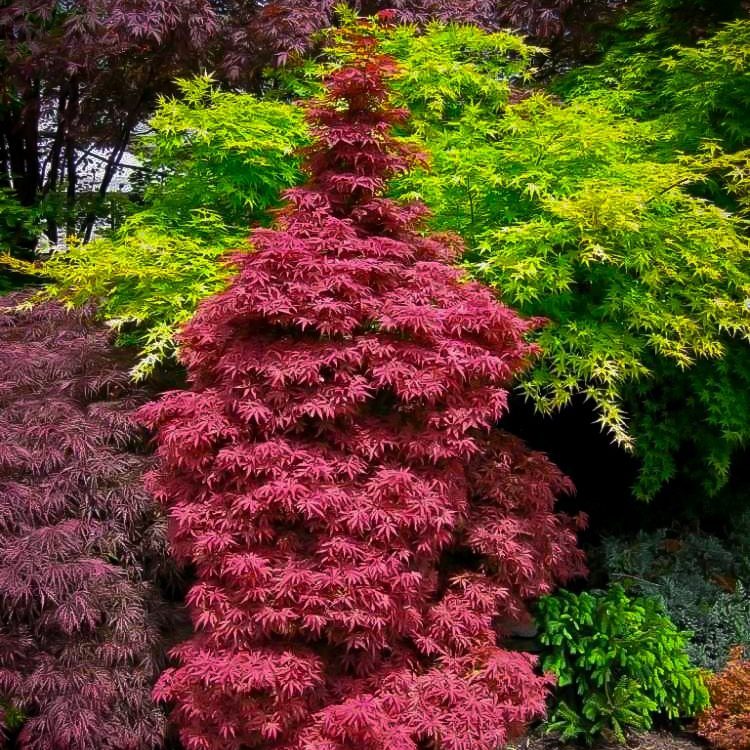
Skeeter’s Broom
This statuesque, narrow and upright Japanese maple with bright red spring leaves matures to purple in summer and scarlet in fall. Skeeter’s Broom works for smaller garden spaces and containers.
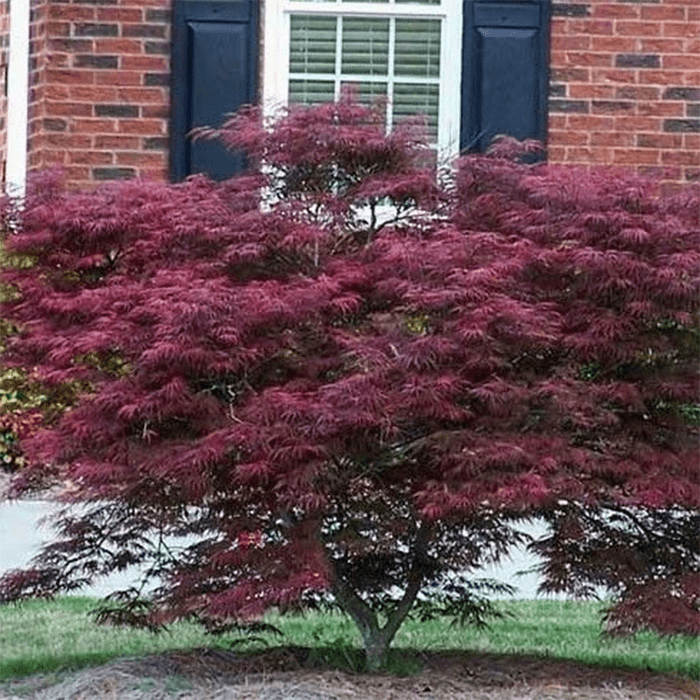
Tamukeyama
We like this mounding, dwarf tree with waxy, deep bark and cascading branches. Deeply lobed leaves are purple-red in summer and bright red in fall. Tamukeyama is another good container tree.

